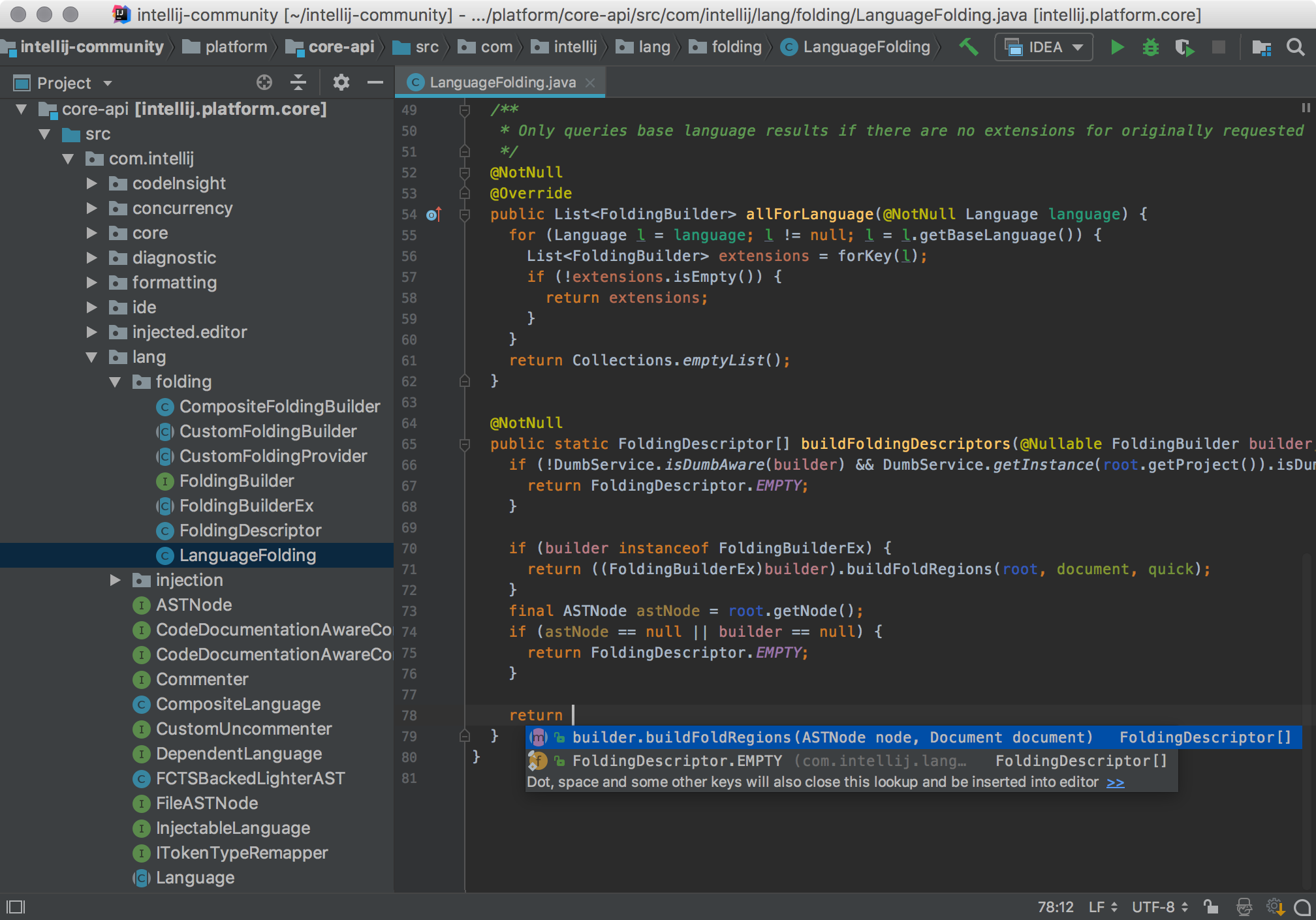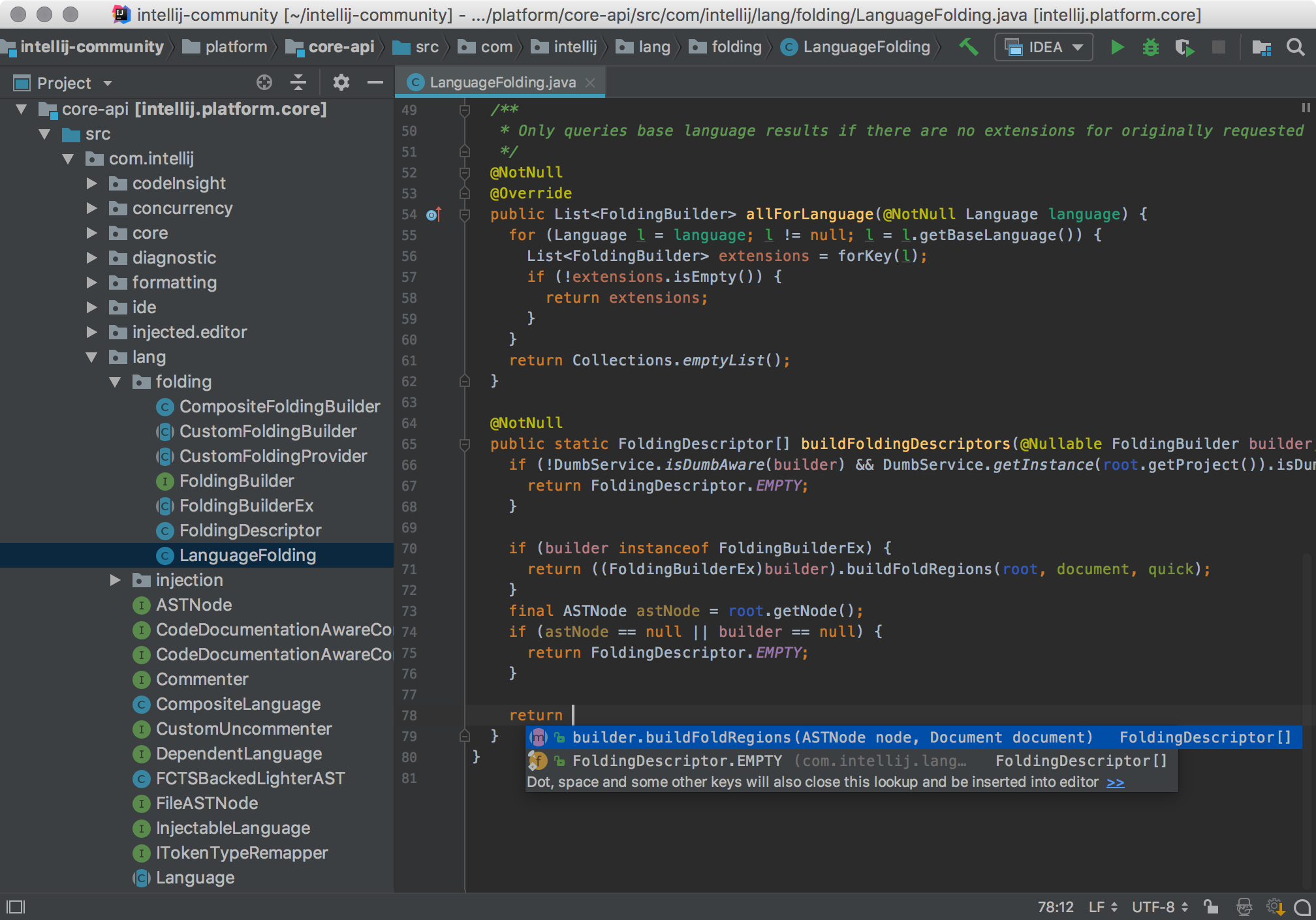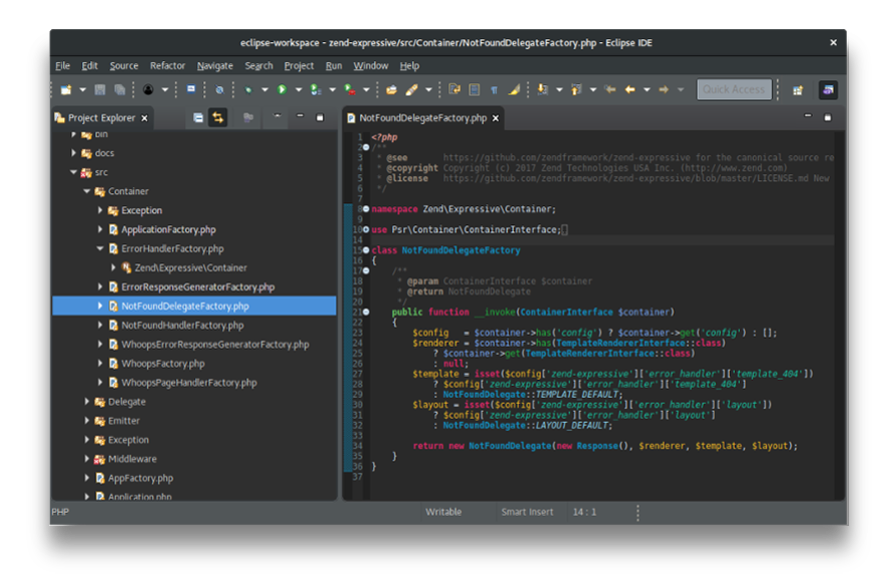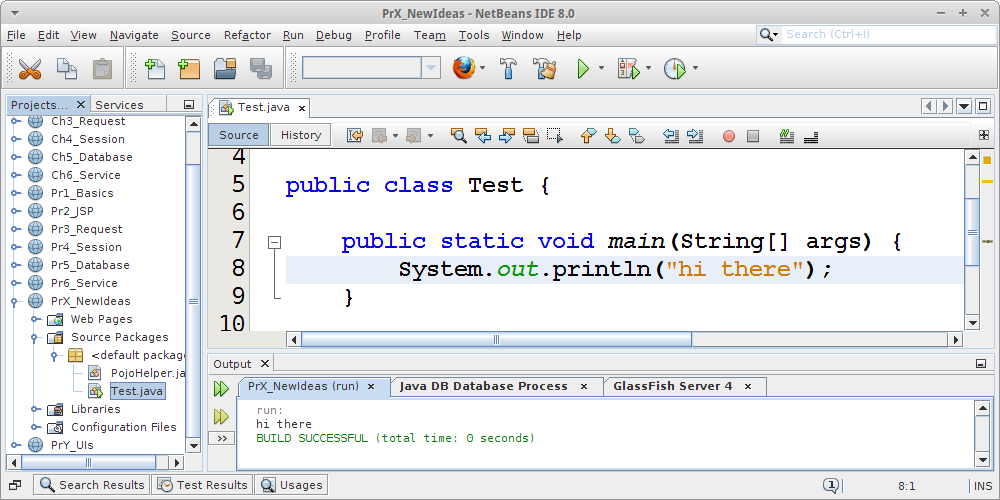
Refactoring is the method of cleansing up and restructuring present code with out altering its exterior habits. Java builders can refactor their code to boost its construction and make it extra readable, concise, and maintainable, which may also help future growth and lead to high-quality software program.
Java refactoring instruments simplify the method of refactoring code, improve developer effectivity, and reduce errors. This information will break down the next high Java refactoring instruments when it comes to their options, professionals, cons, and pricing so you may choose the very best one in your growth wants:
- IntelliJ IDEA: a terrific selection for Java builders searching for a complete answer to automate refactoring to optimize their code safely and effectively with minimal guide effort.
- Eclipse: ultimate for builders searching for numerous automated refactoring choices from an open-source Java IDE.
- NetBeans: a strong choose for builders searching for easy refactoring through an open-source Java IDE with a user-friendly interface.
Bounce to:
Sponsored: Bug Monitoring Software program
IntelliJ IDEA

Finest for Java builders searching for a complete answer to automate refactoring to optimize their code safely and effectively with minimal guide effort.
IntelliJ IDEA is a well-liked Java built-in growth setting (IDE) that provides a variety of refactorings as a part of its complete set of options. Builders can use IntelliJ IDEA’s Java refactoring to securely and effectively make their code easier, extra readable, and simpler to take care of through automation and minimal guide intervention.
Options of IntelliJ IDEA
IntelliJ IDEA’s refactoring options embody:
- Rename for lessons, variables, and extra
- Transfer/copy
- Protected delete
- Extract
- Introduce
- Inline
- Change signature
- Discover and change duplicates
- Keyboard shortcuts
- Refactoring preview
- Downside detection
As you may see, IntelliJ IDEA presents a variety of refactoring options. Builders can refactor their Java code through rename (class, variable, technique, and so forth.), transfer/copy (class, technique, subject, and so forth.), protected delete, extract (technique, fixed, subject, parameter, and so forth.), introduce variable, inline, change signature, and extra. IntelliJ IDEA can discover and change duplicates, and most of its refactoring capabilities are shortly accessible through handy keyboard shortcuts.
IntelliJ IDEA additionally lets builders preview refactoring adjustments earlier than making use of them and detects refactoring issues, providing particulars on any present conflicts that must be addressed.
Professionals of IntelliJ IDEA
IntelliJ IDEA’s professionals as a Java refactoring device embody:
- Refactoring versatility
- Automations
- Code preview
- IDE integrations
Java builders searching for a complete refactoring device will get simply that with IntelliJ IDEA, because it covers many corners, from fundamental to extra superior capabilities. The device automates refactorings intelligently to save lots of time and reduce guide intervention, and its code preview previous to refactoring execution reduces the chance of bugs. Refactoring right here additionally integrates seamlessly with different IntelliJ IDEA options like code evaluation, model management, and extra.
Cons of IntelliJ IDEA
IntelliJ IDEA’s cons as a Java refactoring device embody:
- Business license
- Complexity
- Hefty set up
- Useful resource-intensive
Not like some Java refactoring instruments which might be completely open-source and free to make use of, IntelliJ IDE has a business license that fees you a premium for its high options. This is usually a draw back for builders with restricted budgets.
Whereas IntelliJ IDEA’s numerous refactoring options are a plus, they can be a minus when it comes to complexity and studying curve, particularly for novices. Having to put in the IDE results in a bigger set up than extra light-weight refactoring instruments, which is usually a drawback if in case you have restricted disk area. IntelliJ IDEA can be resource-intensive, which may result in slowed efficiency.
Pricing of IntelliJ IDEA
IntelliJ IDEA’s pricing is split between plans for organizations and particular person use. It has a 90-day free trial, a 50 p.c low cost for startups, universities, academic organizations, and nonprofits, and is free for qualifying non-commercial open-source initiatives, college students, academics, and sure classroom help conditions. It additionally has a Neighborhood Version that’s free and open-source with fundamental options.
IntelliJ IDEA’s plans for organizations are as follows:
- Final: $599 per consumer for the primary 12 months.
- All Merchandise Pack: $779 per consumer for the primary 12 months.
The Final plan provides you IntelliJ IDEA and all the pieces the favored Java IDE has to supply. The All Merchandise Pack contains IntelliJ IDEA plus fifteen different instruments (CLion, Code With Me, GoLand, PhpStorm, PyCharm, ReSharper, Rider, WebStorm, and so forth.) through a single subscription.
IntelliJ IDEA’s plans for people comply with an analogous sample to the organizational choices, solely with cheaper pricing:
- Final: $169 for the primary 12 months.
- All Merchandise Pack: $289 for the primary 12 months.
You may study extra by studying our IntelliJ IDEA Review.
Eclipse

Finest for builders searching for numerous automated refactoring choices from an open-source Java IDE.
Eclipse is a widely-used Java IDE geared up with a number of refactoring options, comparable to renaming, extracting, inlining, and transferring to boost code high quality, readability, and maintainability.
Options of Eclipse
Eclipse’s high refactoring options embody:
- Rename
- Transfer/copy
- Extract
- Inline
- Protected delete
- Extract/introduce variable
- Change signature
Builders can rename numerous Java components (lessons, variables, strategies, and so forth.) in Eclipse, and the refactoring device will replace all of the references routinely. You may transfer/copy class, strategies, and fields, extract (technique, class, variable, interface, and so forth.), and inline (strategies, variables, constants, and so forth.). The refactoring device additionally has protected delete to make sure you don’t unintentionally take away lessons, strategies, or different code components, change signature for strategies or lessons, and extra.
Professionals of Eclipse
Eclipse’s strengths when it comes to Java refactoring embody:
- Wide selection of options
- Automates refactoring
- Open-source
- IDE integrations
Eclipse presents a variety of refactoring options, making it a strong device for guaranteeing your code is readable, maintainable, and optimized for high quality. It automates refactoring to save lots of time and reduce guide errors, and its open-source nature is one other plus for Java builders searching for a free answer. Eclipse’s refactoring integrates nicely with the IDE’s different options (code completion, code evaluation, and so forth.), giving builders added comfort.
Cons of Eclipse
Eclipse’s refactoring weaknesses embody:
- Complexity
- Useful resource-intensive
- Lack of customization
One among Eclipse’s strengths (wide selection of options) can be a weak spot for some builders, as they could initially discover the refactoring device complicated. Builders working with massive codebases or older, much less highly effective {hardware} might encounter sluggish efficiency, as Eclipse is understood for being resource-intensive. One other Eclipse weak spot is that its customization choices for particular challenge necessities are restricted and will drive you to depend on plugins to fill that void.
Pricing of Eclipse
Eclipse is an open-source IDE. As such, builders can get pleasure from its refactoring capabilities and different IDE options for gratis. Whereas Eclipse itself is free, chances are you’ll incur prices do you have to resolve to make use of any paid plugins and extensions.
You may study much more by studying our Eclipse IDE Review.
NetBeans

Finest for builders searching for easy refactoring through an open-source Java IDE with a user-friendly interface.
NetBeans is a light-weight, open-source Java IDE that comes geared up with fundamental refactoring options to assist builders improve code high quality, readability, and maintainability through a easy, user-friendly interface.
Options of NetBeans
NetBeans’ Java refactoring options embody:
- Rename
- Extract
- Discover and change
- Copy/transfer
- Inline
- Protected delete
Java programmers can use NetBeans to rename strategies, lessons, variables, and so forth. They’ll extract strategies, constants, or variables to enhance code readability and reusability, use discover and change to shortly change code, copy/transfer to prepare code logically to extend maintainability, and inline for simplifying code. There’s additionally a protected delete function for eradicating unused code to enhance high quality.
Professionals of NetBeans
Benefits of utilizing NetBeans for Java refactoring embody:
- Open-source
- Consumer-friendly
- IDE integration
- Refactoring versatility
Java builders searching for a free, open-source refactoring answer can discover it with NetBeans. It’s user-friendly with an intuitive interface, making it ultimate for many who worth simplicity and novices eager to strive a much less technical refactoring device. The Java refactoring options mesh nicely with NetBeans’ different IDE capabilities to assist streamline and unify your growth course of. Lastly, whereas not as feature-rich as different instruments on this record, NetBeans supplies numerous refactoring choices for bettering Java code.
Cons of NetBeans
Disadvantages of NetBeans’ Java refactoring embody:
- Much less superior options than others in its class
- Much less assist
- Giant challenge efficiency may be sluggish
As talked about, NetBeans does supply some Java refactoring versatility, however it isn’t as superior as some competing IDEs on this division, comparable to IntelliJ IDEA and Eclipse. NetBeans additionally has much less neighborhood/business assist and assets, which may turn out to be problematic for those who encounter points. And if in case you have massive or complicated refactoring initiatives, NetBeans might present sluggish efficiency.
Pricing of NetBeans
Since NetBeans is open-source, the Java IDE and its refactoring options are free to make use of.
What to Search for in a Java Refactoring Device
Java code refactoring instruments are available many kinds. They’re generally offered as standalone functions or plugins, whereas they can be singular options present in built-in growth environments. Whatever the supply, there are a number of elements to search for in a Java refactoring device to make sure you make the fitting selection, together with:
- Consumer interface and user-friendliness
- Efficiency, particularly with massive codebases
- Assist and energetic neighborhood
- Documentation and studying assets
- Compatibility with developer environments and ecosystems
- Language assist
- Configuration choices and customizations
- Developer device integrations
- Variety of refactoring capabilities
When searching for a Java refactoring device, search for evaluations on the consumer interface. It ought to be intuitive and user-friendly so you may shortly begin unlocking the device’s options. As you learn evaluations on the consumer interface, additionally search for feedback on the refactoring device’s efficiency. The perfect refactoring device ought to refactor shortly, even when working with massive codebases, to make sure your productiveness isn’t negatively impacted. Evaluations may also reveal if the refactoring device has strong assist and an energetic neighborhood providing assist, plus tutorials, documentation, and different assets.
Compatibility together with your growth setting (Java frameworks, construct programs, IDEs, and so forth.) is one other issue to contemplate, as are integrations with model management programs (Git, Mercurial, and so forth.) and different developer instruments (steady integration programs, construct instruments, static code analyzers, and so forth.) to assist streamline your growth course of. A refactoring device that helps a number of programming languages may be useful when working with initiatives that aren’t completely Java-centric.
If you would like extra management over the Java code refactoring course of, search for a customizable device with loads of configuration choices relating to refactoring guidelines, habits, and extra. And in order for you a device that may deal with initiatives of all sizes, search one that provides scalability. There are open-source Java refactoring instruments which might be free to make use of, plus business choices with extra superior options. In case your finances is proscribed, search for the previous, and in order for you prolonged functionalities, search the latter. As for options, the extra refactoring capabilities, comparable to renaming, transferring code, extracting, and so forth., the higher. Additionally, search for options like code evaluation, code preview, code cleanup, security checks, and undo/redo.
Ultimate Ideas on Java Refactoring Instruments
The Java refactoring instruments listed above are a few of the greatest options for maintaining your code clear, readable, and maintainable whereas boosting your productiveness and effectivity as a developer. Earlier than selecting a device to refactor your Java code, be certain it has the options you need, is user-friendly with strong assist and an energetic neighborhood, and is appropriate together with your present growth setting to make sure it’s the proper match.
Read Also: What’s new in the Jetpack Compose August ’23 release